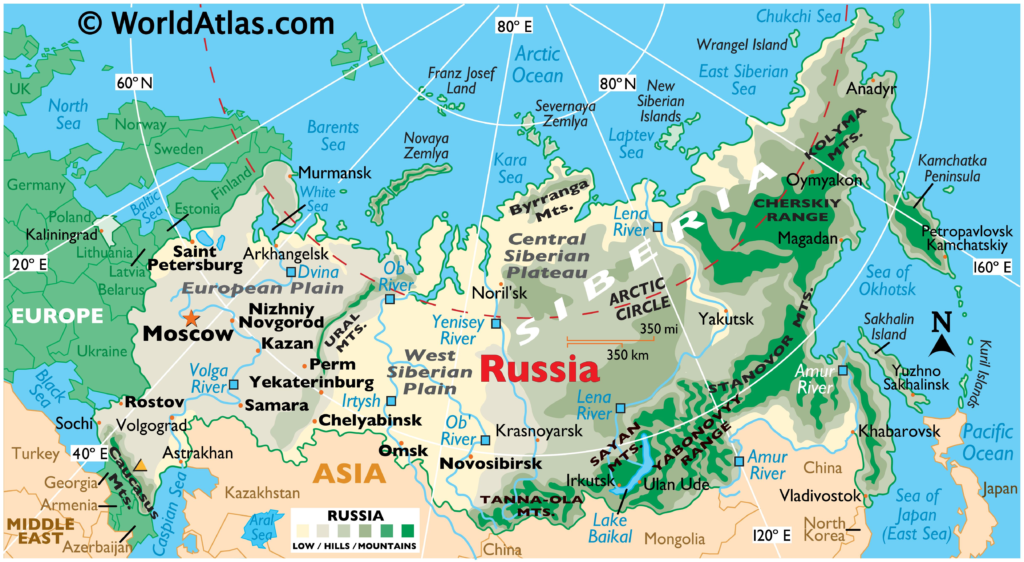Russia Weather: A Comprehensive Guide to the Varied Climate of the Largest Country on Earth
Russia, the largest country in the world, boasts a climate that is as diverse as its vast landscapes. From the freezing temperatures of Siberia to the mild conditions along the Black Sea coast, understanding Russia’s weather is essential for anyone planning to visit or live in this immense nation. In this article, we’ll provide you with a comprehensive guide to Russia’s climate, regional variations, and what to expect when it comes to the weather in Russia.
Russia’s Diverse Climate Zones
Russia’s climate is influenced by its sheer size and geographical diversity. The country can be broadly divided into several climate zones:
1. Arctic Zone
- Temperature: Extremely cold, with winter temperatures often dropping below -40°F (-40°C).
- Precipitation: Low precipitation, primarily in the form of snow.
- Characteristics: The Arctic zone covers the northernmost part of Russia, including Siberia. It experiences extremely harsh winters and short summers, with polar night and polar day periods.

2. Subarctic Zone
- Temperature: Cold winters with temperatures ranging from -22°F to -4°F (-30°C to -20°C). Summers are short and cool.
- Precipitation: Low to moderate, with snowfall in winter.
- Characteristics: This zone extends south of the Arctic zone and includes parts of Siberia and the northern regions of European Russia.
3. Temperate Zone
- Temperature: Variable, with warm summers and cold winters. Winters average from 23°F to 5°F (-5°C to -15°C).
- Precipitation: Moderate to high, with rainfall throughout the year.
- Characteristics: The temperate zone covers the majority of European Russia and includes cities like Moscow and St. Petersburg. It experiences distinct seasons.
4. Continental Zone
- Temperature: Hot summers with temperatures reaching 86°F to 104°F (30°C to 40°C). Winters are cold, averaging from 14°F to -4°F (-10°C to -20°C).
- Precipitation: Moderate, with drier summers and wetter winters.
- Characteristics: Found in southern Siberia and parts of the Russian Far East, the continental zone has a pronounced temperature difference between summer and winter.
5. Maritime Zone
- Temperature: Mild winters with temperatures rarely dropping below 23°F (-5°C). Summers are cool to warm, ranging from 59°F to 72°F (15°C to 22°C).
- Precipitation: High, with rainfall distributed throughout the year.
- Characteristics: This zone includes the Black Sea coast and the Russian Far East. It enjoys milder winters and more moderate temperature variations.

Regional Weather Variations
Within these broad climate zones, Russia exhibits significant regional variations. For example, the western part of Russia, including Moscow, experiences cold winters and warm summers, while the eastern regions have colder winters and shorter summers. The Black Sea coast enjoys a Mediterranean-like climate, and Siberia faces the most extreme cold.
Russia’s climate is incredibly diverse, offering a wide range of weather experiences depending on the region and time of year. Whether you’re planning a trip to Moscow, exploring the vast Siberian wilderness, or visiting the Black Sea resorts, understanding Russia’s climate variations will help you prepare for the weather and make the most of your journey in this vast and captivating country.
